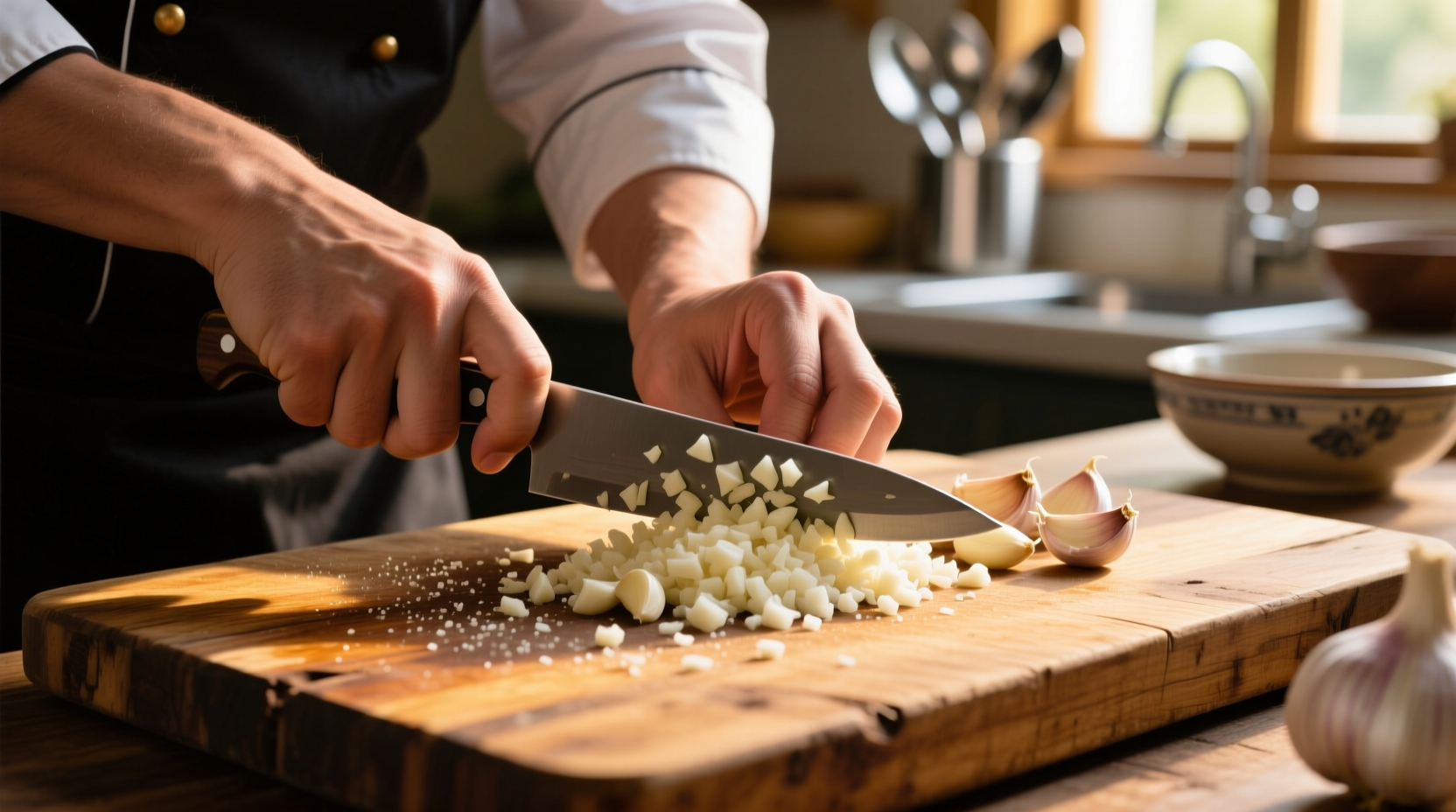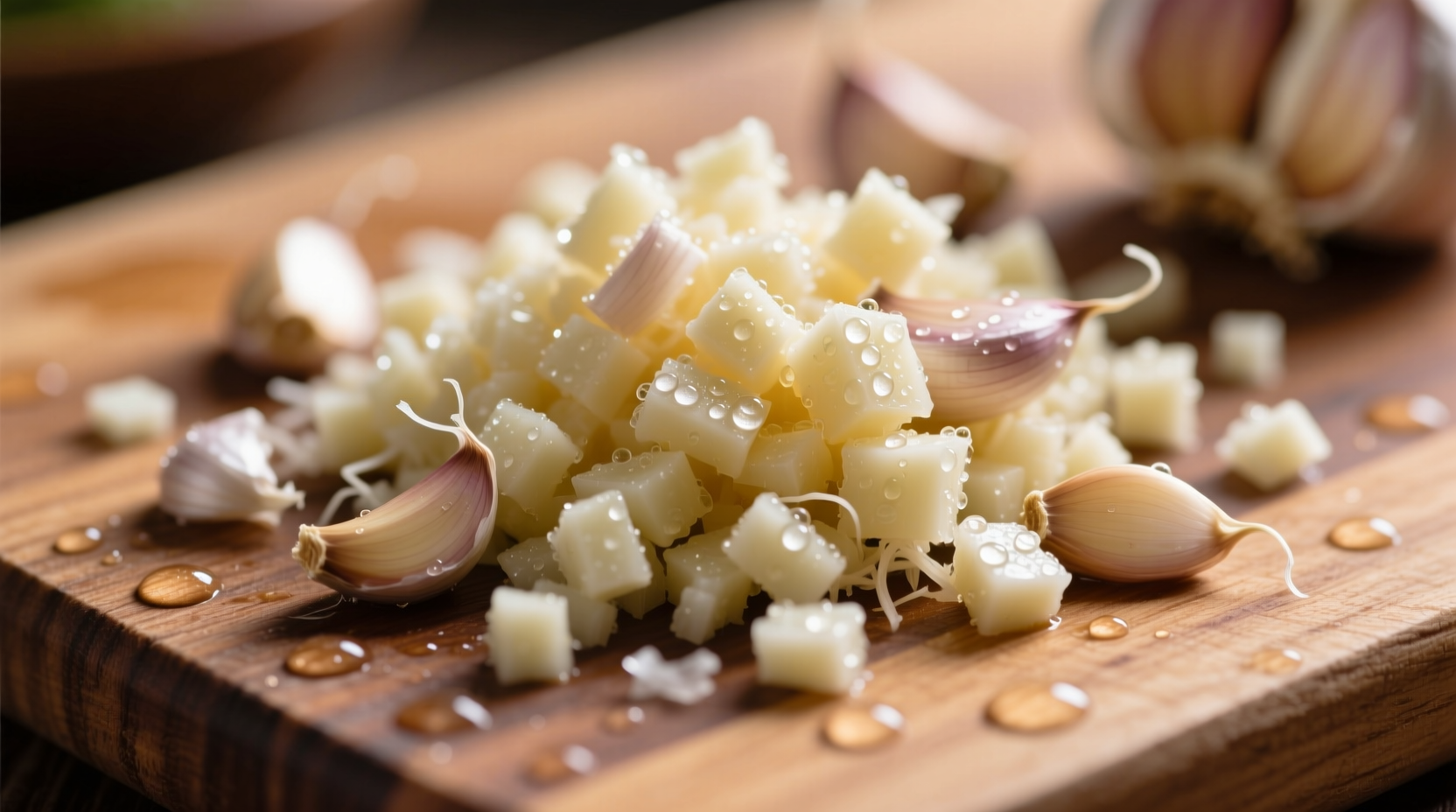There's a reason why professional kitchens never rely on jarred garlic. The difference between freshly minced garlic and its pre-packaged counterpart isn't just subtle—it's a complete transformation of flavor chemistry, nutritional value, and culinary impact. Understanding this distinction can elevate your cooking from ordinary to extraordinary.
The Science Behind Superior Flavor
When you crush or mince a garlic clove, you trigger a fascinating chemical reaction. The enzyme alliinase interacts with alliin to create allicin—the compound responsible for garlic's distinctive aroma, flavor, and health properties. This reaction reaches its peak approximately 10 minutes after mincing, creating what food scientists call the "flavor window."
According to research published in the Journal of Agricultural and Food Chemistry, freshly minced garlic contains up to 90% more allicin than pre-minced varieties stored in jars. The preservatives and processing methods used in commercial minced garlic significantly reduce these beneficial compounds. The USDA's nutrient database confirms that fresh garlic maintains higher levels of antioxidants compared to processed alternatives.
| Characteristic | Freshly Minced Garlic | Pre-Minced (Jarred) Garlic |
|---|---|---|
| Allicin Content | High (peaks at 10 minutes) | Reduced by 70-90% |
| Flavor Complexity | Bright, complex, layered | Flat, one-dimensional |
| Shelf Life | 24-48 hours refrigerated | 2-3 months refrigerated |
| Nutritional Value | Full spectrum of compounds | Significantly diminished |
Practical Mincing Techniques for Maximum Impact
Mastering the art of garlic preparation takes just minutes but dramatically impacts your dishes. Here's how to extract the most flavor:
Essential Tools Comparison
While many gadgets promise quick garlic prep, not all deliver optimal flavor:
- Sharp Chef's Knife: Provides the cleanest cut, minimizing cell damage that leads to bitter flavors. The traditional "rock chop" technique releases maximum flavor compounds.
- Garlic Press: Convenient but creates overly fine mince that burns easily. Best reserved for dishes where garlic will cook slowly in liquid.
- Microplane Grater: Creates an almost paste-like consistency ideal for marinades and dressings where immediate flavor integration is needed.
Step-by-Step Perfect Mincing Method
- Peel cloves by placing flat side of knife on clove and applying firm pressure
- Remove any green sprouts (they cause bitterness)
- Slice cloves lengthwise, then crosswise for even pieces
- Use rocking motion with knife to mince to desired consistency
- Allow minced garlic to rest 10 minutes before cooking
This resting period is crucial—it allows the allicin formation process to complete, maximizing both flavor and health benefits. Skipping this step wastes the potential of your fresh garlic.

When Freshly Minced Garlic Makes the Difference
Not all dishes require freshly minced garlic. Understanding context boundaries helps you prioritize your efforts:
Dishes Where Freshly Minced Is Essential
- Raw applications: Aioli, salad dressings, and bruschetta topping where raw garlic flavor shines
- Quick-cooking dishes: Stir-fries, sautés, and pasta aglio e olio where garlic doesn't have time to develop flavor from pre-minced
- Mediterranean cuisine: Traditional pesto, tzatziki, and romesco sauces
Situations Where Pre-Minced Works Acceptably
- Long-simmered dishes: Stews, soups, and tomato sauces where flavor develops over hours
- Baked goods: Garlic bread or focaccia where raw garlic notes aren't prominent
- Emergency cooking: When you've run out of fresh cloves unexpectedly
Smart Storage Solutions for Minced Garlic
Proper storage extends the flavor window of freshly minced garlic:
- Short-term (24-48 hours): Store in airtight container with a thin layer of olive oil to prevent oxidation
- Medium-term (1 week): Freeze in ice cube trays with oil, then transfer to freezer bags
- Avoid: Storing in water (dilutes flavor) or leaving exposed to air (causes rapid degradation)
Food safety experts at the National Center for Home Food Preservation confirm that properly stored minced garlic in oil remains safe for up to 48 hours in the refrigerator. For longer storage, freezing is recommended to prevent botulism risk.
Common Mistakes That Waste Garlic's Potential
Avoid these frequent errors that diminish garlic's impact:
- Adding garlic too early: In sautéing, add garlic after onions to prevent burning
- Over-mincing: Creates bitter compounds through excessive cell damage
- Skipping the rest period: Prevents full allicin development
- Using old garlic: Sprouted or soft cloves have diminished flavor compounds
Professional chefs like those at the Culinary Institute of America emphasize that garlic should be treated as a featured ingredient rather than just background flavor. When properly prepared, it can transform simple dishes into memorable culinary experiences.
Practical Flavor Pairing Guide
Maximize your freshly minced garlic by pairing it with complementary ingredients:
- With lemon: Brightens garlic's sharpness in Mediterranean dishes
- With red pepper flakes: Creates balanced heat in Italian cuisine
- With ginger: Forms aromatic base for Asian stir-fries
- With fresh herbs: Parsley, cilantro, or basil mellow garlic's intensity
Remember that freshly minced garlic's flavor evolves during cooking. Add it early for mellow background notes or late for pronounced garlic character—your timing determines its role in the final dish.
Frequently Asked Questions
How long after mincing should I use garlic for best flavor?
Wait exactly 10 minutes after mincing before cooking to allow maximum allicin formation. This chemical reaction peaks at the 10-minute mark, creating optimal flavor and health compounds. Using it immediately or waiting too long both reduce its potential.
Can I freeze freshly minced garlic without losing flavor?
Yes, freezing freshly minced garlic in olive oil preserves 85-90% of its flavor compounds for up to 3 months. The National Center for Home Food Preservation confirms this method maintains quality significantly better than jarred alternatives. Portion in ice cube trays for easy use in recipes.
Why does my freshly minced garlic sometimes turn blue or green?
This harmless color change occurs when garlic's sulfur compounds react with trace metals in water or cookware, particularly in acidic environments. It's more common in immature garlic and doesn't affect flavor or safety. The phenomenon is well-documented by food scientists at the University of California Cooperative Extension.
How much freshly minced garlic equals one clove?
One medium garlic clove yields approximately 1½ teaspoons of minced garlic. However, flavor intensity varies by garlic variety and freshness. When substituting for pre-minced garlic from jars, use 25% less freshly minced garlic as it's significantly more potent.











 浙公网安备
33010002000092号
浙公网安备
33010002000092号 浙B2-20120091-4
浙B2-20120091-4